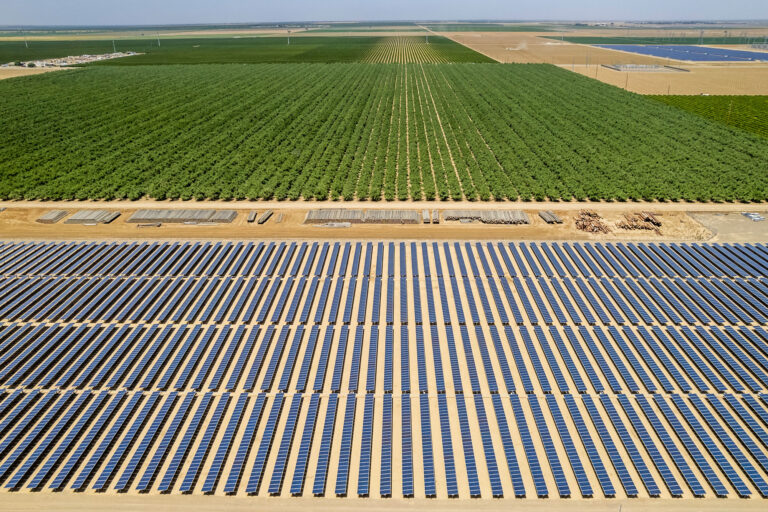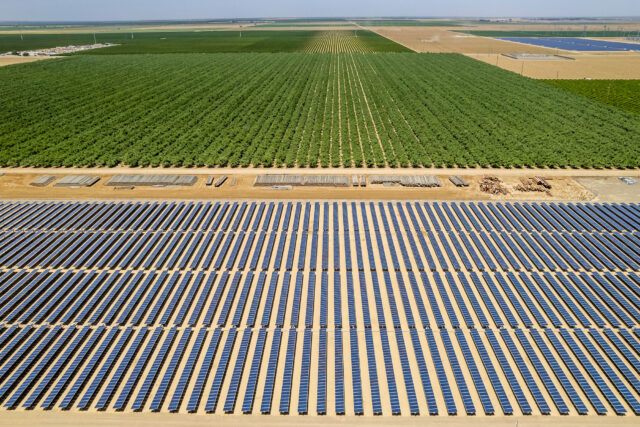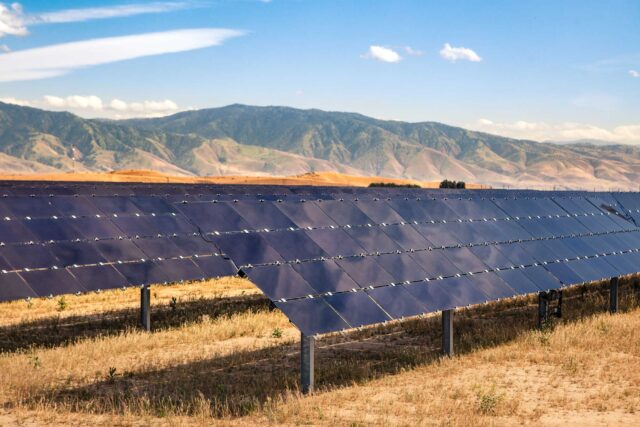Hundreds of thousands of acres of San Joaquin Valley farmland may come out of irrigated production in the coming decades to help balance overdrafted groundwater basins under the Sustainable Groundwater Management Act. At the same time, California needs to ramp up clean energy development to meet the goals of SB 100—and the valley has high solar potential. At a virtual event last week, PPIC Water Policy Center research fellow Andrew Ayres moderated a panel of experts and local stakeholders; they explored how solar development could help California meet multiple objectives while overcoming some challenges and delivering lasting benefits to the region.
Annabelle Rosser, research associate at the PPIC Water Policy Center, presented new research on solar development and groundwater in the San Joaquin Valley. The study found a potentially high overlap between valley lands that are suitable for solar and lands likely to be fallowed, which could help provide new sources of revenue and employment on these lands. However, to maximize the benefits of solar development for valley residents, local, state, and federal stakeholders need to better integrate planning, strengthen workforce training efforts, and simplify permitting. With careful planning, Rosser said, solar development in the region could simultaneously support the state’s clean energy goals, ease the economic pain of changing land uses, and reduce demands on the region’s dwindling groundwater.
The transition is already underway in some places. Lorelei Oviatt, director of Kern County’s Planning and Natural Resources department, says her county is pretty far along the renewable path, with some 157,000 acres of wind and solar. The county’s solar projects currently hire 90% of their workers locally, she said, but the path forward isn’t necessarily easy. Property and sales tax revenues remain a concern. “All we have is land to produce the money that keeps our libraries open, keeps Meals on Wheels going, and law enforcement [going]. When we lose agriculture, we’re not just losing jobs,” Oviatt said, but also revenue. “Jobs are great,” she said, “but nobody wants to live in a community that doesn’t have services.” Still, Oviatt says, solar does offer the opportunity to “remonetize” lands leaving irrigated production.
Mayor Rey León of Huron concurred with Oviatt, saying that while solar development is attractive, he has some concerns in a traditionally agricultural region. “Acreage that goes out of production is taking out local jobs….There’s some fine-tuning to do to ensure that there’s equity.” Huron is one of the poorest cities in the state of California, and agriculture has been its economic backbone. Now “[l]ettuce season is all but dead.” Training and education, he said, are key to help former agricultural workers and young people make the transition. “Our high schools and community colleges need to…have more resources and provide more opportunities for our kids….These students need to be the engineers, the attorneys within the clean energy industry, the managers, the trade workers. Those are good jobs.”
Dan Kim of Golden State Clean Energy described both the promise and hurdles to solar development in the valley. He said that the company’s current project, Westlands Solar Park, is on track to provide over 1,000 MW of electricity when complete. But the industry has been stymied by rising costs and transmission constraints. “When we started, the interconnection process would take about three years from beginning to end,” he said. “Currently…the timeframe is upwards of almost seven to eight years.”
The difficulty of getting projects online will make it challenging to meet the state’s increasingly ambitious renewable energy needs, Kim said. Not long ago, the state’s needed annual build-out of renewable capacity was estimated at 4,000 MW annually—but that projection was recently raised to 6,000–7,000 MW annually. “That’s going to strain the interconnection timing.”
This is where the state comes in. Erica Brand of the California Energy Commission (CEC) said a suite of generation, energy storage, and transmission investments are needed to achieve SB 100’s goals. “We need a significant build-out of clean energy in the state over the next 25 years in many regions of the state, including the San Joaquin Valley.” While the clean energy transition offers exciting opportunities for the San Joaquin Valley, “we also need to be sure the pathway to achieving SB 100 is affordable, equitable, reliable, and implemented in a way that supports local land-use priorities.” She says the CEC is working to integrate more local land-use data into its planning efforts.
We invite you to watch the event video.





